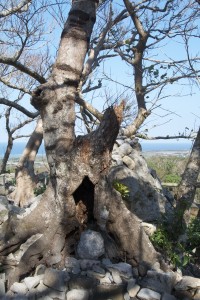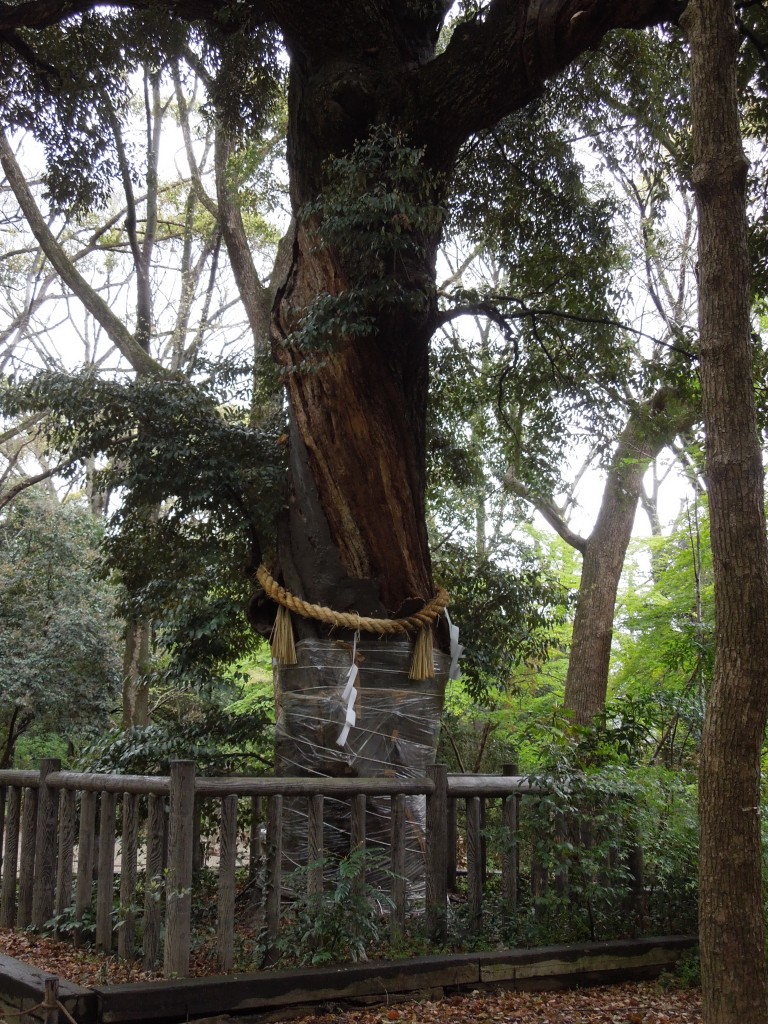
An Okinawan sacred tree
One of the items in the morning’s news on television concerned the death of a sacred tree in Ehime prefecture in Shikoku. Because it had withered, it was due to be cut down at considerable expense to the shrine. However, mysterious holes were found near the base of the trunk, and upon investigation it was found the openings had been used to inject poison into the tree.
Killing a tree is sacrilege enough, but the intentional poisoning of a sacred tree would seem particularly heinous. Who on earth would do such a thing, unless they held an unusually strong grudge against a shrine or its kami? Well, it seems that criminal proceedings are being focussed in a different direction altogether. They’re centering on people in the timber business.
Because of over-foresting in the past, trees that are broad and strong are in short supply. Sacred trees on the other hand have been protected down the centuries, and they may well have been chosen because of their robustness and distinctiveness. Such trees are now rare and worth a lot of money. They play a vital part in the rebuilding of historical buildings such as temples, a recent example being that of Kofuku-ji in Nara which had to import wood from Africa because nothing suitable was available in Japan.
The tree poisoner evidently knew what they were doing, for the poison used kills the tree without damaging the wood. Moreover, it turns out that there was a similar case recently in Ehime, in which another sacred tree was also found to have been poisoned. Police are now also looking at the death over the past ten years of other sacred trees in Kyushu.
Having just visited Yakushima, I dread to think what the materialist criminals would make of the wonderful and special trees that enrich the environment there. In today’s secular world, one is tempted to ask whether nothing is sacred any more!

Sacred tree at Shimogamo Shrine in Kyoto, wrapped in plastic to protect it from disease - and poison!

Leave a Reply